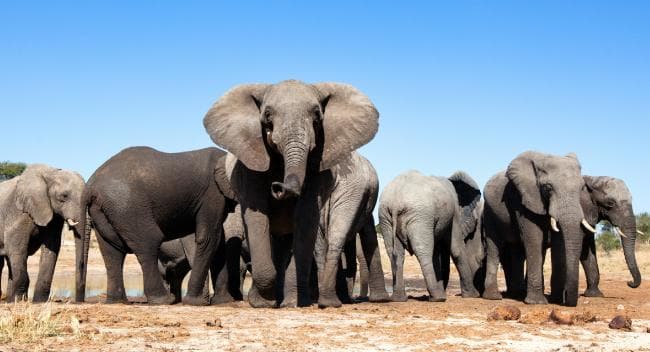TWENTY thousand African elephants per year are killed by a vicious scourge. But there are finally some good signs.

WITH massive tusks that touched the ground, Satao towered over the rest of his herd.
One of the last great “tuskers”, the beast estimated to be around 50 years old was heralded as Kenya’s biggest, oldest, and arguably most iconic elephant. Tourists from around the world would flock to see Satao in his prime.
Yet his celebrity status, and the added protection it afforded him, was not enough to save Kenya’s most beloved bull elephant.
On May 30th, 2014, he was found dead. He was the victim of a poacher’s poisoned arrow. His face crudely hacked off. His ivory, gone.
Satao is just one casualty of the vicious ivory trade decimating the African elephant population; a trade that is estimated to cost Africa 20,000 to 30,000 elephants every year.
The continent’s current population is estimated to be as low as 415,000 — a decline of more than 100,000 since 2007.
However, it is not all bad news.
On December 31, 2017, China’s legal ivory trade ground to a standstill. China is thought to be the world’s largest consumer of ivory.
The move is in accordance with a 2015 announcement by Chinese President Xi Jinping and former US President Barack Obama. Both leaders vowed to enact “near complete” ivory bans within their respective countries.
America’s came into effect in June 2016.
Read the full article on News.com.au: China has banned ivory, but has the African elephant poaching crisis actually been stemmed?
